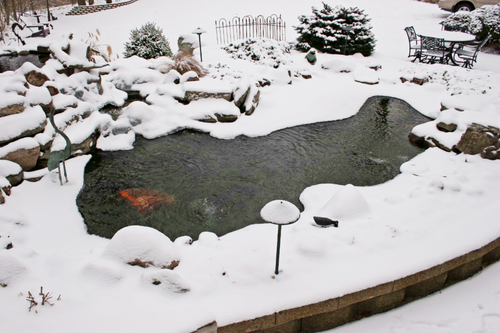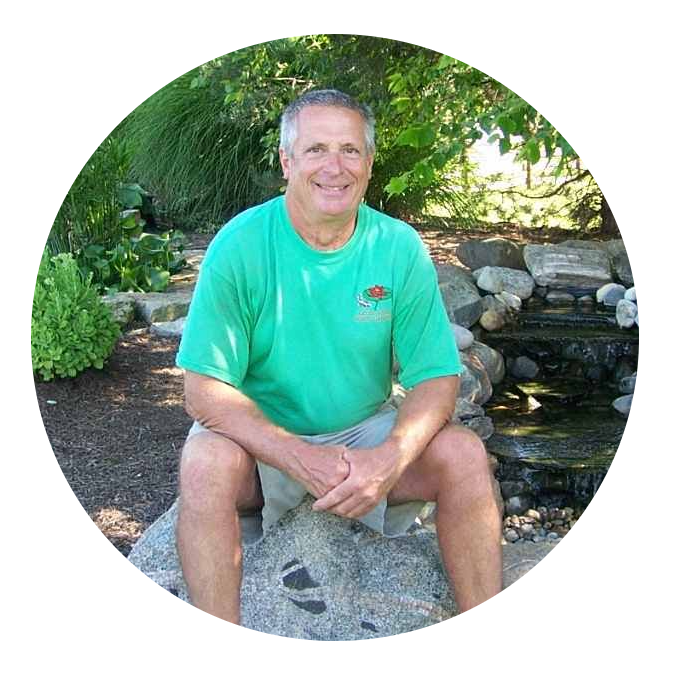Winter Preparations (Part Two)
Winter Plant Care
Most hardy bog plants can be trimmed to about 3-6" after mid-October and placed in the deep section of the pond or water garden. Aquatic grasses, reeds, cattails, rushes, and similar grass-like plants should be only trimmed to about 18" and remain in shallow water (1-6" of water above pot) so that their stems rise above the surface of the water. Oxygenators and lilies can stay in the deep section that they are normally in (18-36"), as long as they are below ice level. Trim all remaining leaves and stems off your lilies after the first couple of freezes to prevent them from fouling the water as they are shed.
If you have tropical plants, you can bring them inside as houseplants over the winter, or simply discard them and replace them in the spring. Most will do well in a pan with water near a bright window. Umbrella palms do especially well indoors over the winter. Tropical water lilies and floating plants can be a challenge to overwinter, and they are generally replaced each year unless you have access to a greenhouse that maintains a temperature of 65-75 F° year-round. Remember that floating plants killed by frost should be immediately removed so that they do not add to the plant debris in your water garden. Tropical plants can generally be added back into the pond once water temperatures reach 65-70 F°, usually around late May.
Keep Your Pond Covered
We highly recommend placing a net over your pond in the fall before the leaves begin to fall. Just stretch it over the pond and secure it with stones or garden staples. If a heavy load of leaves causes the net to sag, just scoop them off with a broom or hand net. You may see your water become discolored from the tannins or pigments from the leaves - this is completely harmless and will dissipate soon after the leaves are removed. Your goal should just be to prevent the leaves from collecting in the bottom of the pond and fouling the water. If you have trees with particularly small leaves (such as locusts), you should choose a net with a smaller mesh, 3/8" or less. We also offer netting with domed supports to keep leaves completely out of the water.
Use Deicers or Subsurface Aerators
Keeping a hole in the ice is absolutely essential to maintaining your pond's health. Without a hole, toxic gasses have no place to escape and then can harm your fish. Remember, fish need to breathe too! The best option for this is definitely a floating deicer. As the temperature begins to drop, before ice begins to form, you should set the deicer in the pond. Plug it in, and you're done! The deicer will keep a hole in the ice through the winter, and they feature built-in thermostats to automatically turn on when water temperatures drop below freezing, and off when it is no longer needed.
Another option is to use subsurface aerators to provide a source of air exchange. A good example would be the Atlantic Typhoon (TA1800 and TA3600) Series. The pump is placed outside the pond and the diffusers are placed on a shelf (around 12" deep) or suspended off the bottom at a depth of 12-15". The bubbling from the diffusers provides enough water movement to keep an open-air hole for a very low energy cost in all but the most extreme of winter temperatures. When used in conjunction with a floating deicer, subsurface aerators are able to keep an even large area free of ice over the winter.
Once Spring Finally Arrives
Once the chance of a prolonged freezing spell has passed (usually around late March), you can return any pumps and underwater lights to their regular locations. Any plants can also be retrieved from their deepwater bed and placed in their regular locations. You can start feeding your fish once water temperatures are consistently above 50 F°. A wheat-based food is also best to use for cool, early-season feedings. April/May is also a great time to do any dividing of pot-pound plants. Don't forget to fertilize your plants (except oxygenators) to increase foilage and flower production.

 US Dollars
US Dollars

